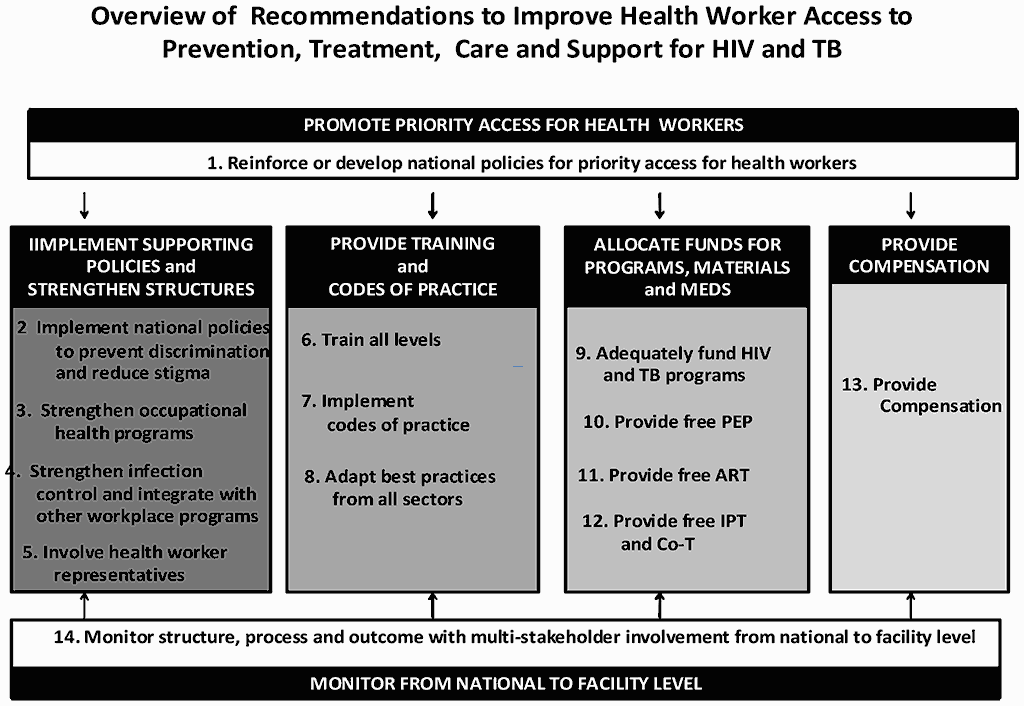كتاب روابط اجتياز لـ 1266
These Policy Guidelines are aimed at accelerating the provision of priority access to prevention, diagnosis, treatment, care and support to healthcare workers with respect to HIV and TB. As is the case with most complex public health interventions, the various elements are mutually synergistic, and failure to implement one of the recommendations can have deleterious effects on proper implementation of others. Thus it is essential that the various statements be seen as a "package", not simply as a series of recommendations that can be individually considered.
Each statement was discussed at length by the GG, and indeed the order of the statements was reorganized from its initial order as a result of extensive discussion and consensus that a logical framework was necessary to underline the inextricable links among the statements. This is shown in the diagram below.
The over-riding recommendation is to establish national policies in which health healthcare workers are provided with priority access (statement 1).
The statements that address this issue are, first, implementing occupational health services in healthcare workplaces (S3), strengthening supporting policies and structures (S2-S5), ensuring integration of infection control and integrating these efforts with other workplace occupational health and safety efforts at all levels, from national departments to health facility level (S4), supporting the implementation with national policies against discrimination and promoting anti-stigma programmes (S2-S5), and ensuring the involvement of health care worker representatives throughout the multi-component programme (S5).
The next set of recommendations relates to providing training and code of practice (S6-S8), training at the trainee stage as well as thereafter (S6), provides guidance through codes of practices (S7), and adopting best practices from the private sector (S8).
This is followed by explicit recommendations regarding funding requirements (S9-S12), specifying that adequate financial allocations are needed (S9), and explicitly, funds for provision of postexposure prophylaxis (S10), ARTs (S11), IPT and CO-T (S12).
The full package must include provisions for compensation (S13), and finally, all aspects of the programme must be monitored (s14)
A framework integrating the various recommendations is shown below, consisting of the 14 recommendations organized into 6 "boxes" which group these statements into a coherent whole. As with any complex public health intervention, the various components, as noted above, should be seen as inter-dependent, such that a weak link in any aspect of the policy will negatively impact the success of the other elements.
The implementation plan for these recommendations is, therefore, a built-in aspect of the guidelines, such that attention to national policies for priority access are supported by appropriate infrastructure, supporting policies (e.g. addressing stigma and discrimination), involvement of the appropriate parties including health workers themselves, assisted with training, codes of practice, and best practices, with financial resources for medications and resources needed as recommended by other WHO guidelines, compensation programmes, and finally, monitoring and evaluation.
Figure 3: Overview of Recommendations to Improve Health Worker Access to Prevention, Diagnosis, Treatment and Care Services for HIV and TB


 تعليق
تعليق